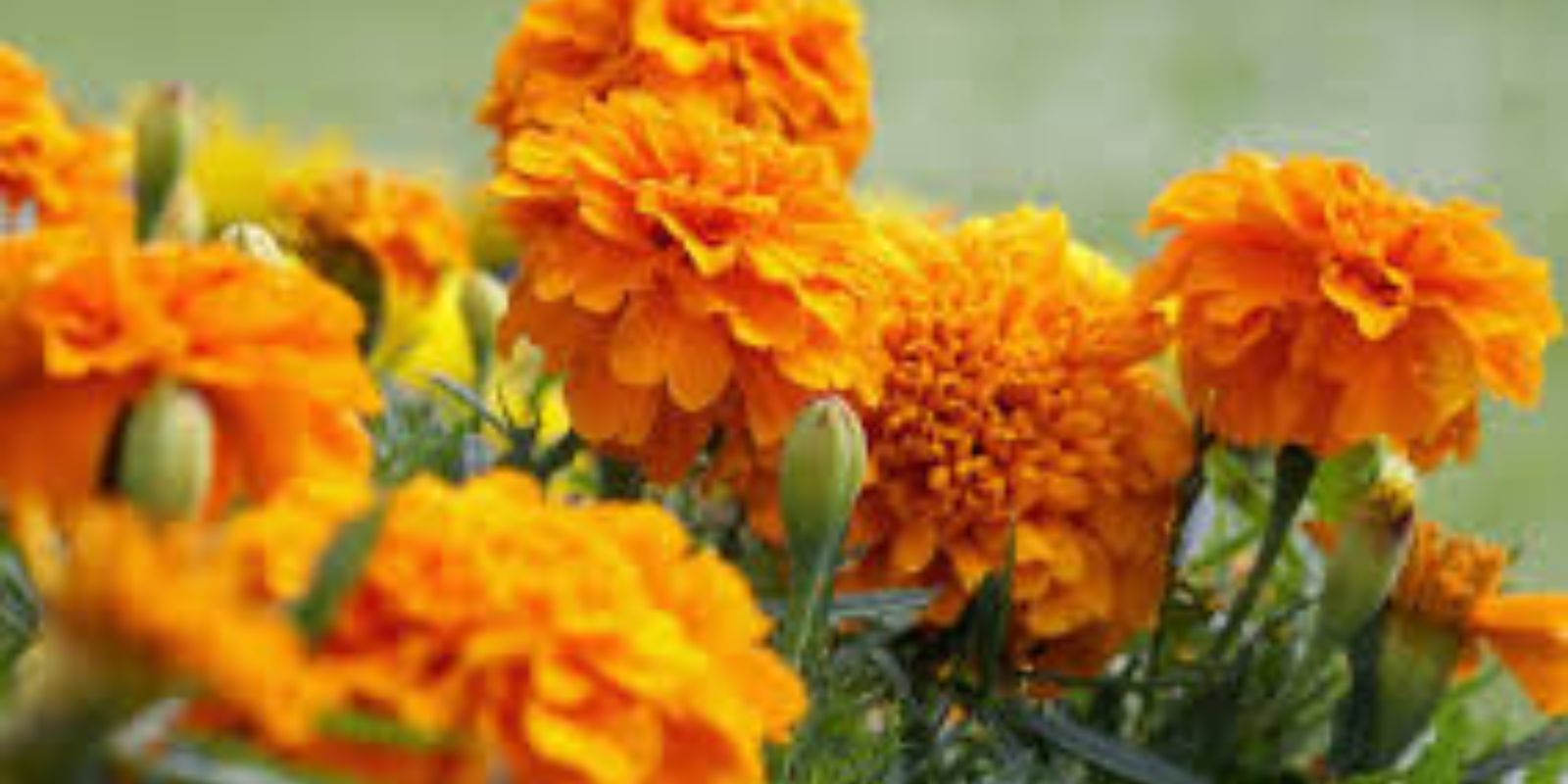Marigolds, with their brilliant hues of orange, yellow, and red, are more than just ornamental plants. They’re a gardener’s best friend, bringing beauty, functionality, and ecological benefits to any garden. Whether you’re a seasoned green thumb or a novice, marigolds are easy to grow and care for, making them a popular choice for gardens worldwide. In this article, we’ll explore everything about marigolds—why they’re so beloved, how to grow them, and how they can transform your garden into a thriving paradise.
Why Marigolds Are a Must-Have in Every Garden
Marigolds aren’t just visually stunning—they offer numerous benefits that make them invaluable in the garden.
- Pest Repellent:
Marigolds are known for their natural ability to repel harmful pests like aphids, nematodes, and whiteflies. The scent of their flowers and foliage deters these unwelcome visitors, protecting your vegetables and other plants. - Pollinator Magnet:
Bees, butterflies, and other pollinators are drawn to marigolds. Their nectar-rich blooms provide essential nourishment, ensuring pollination for your fruits and vegetables. - Soil Health Boost:
Marigolds help improve soil health by suppressing nematodes that can damage plant roots. Some species even release natural compounds that cleanse the soil. - Easy to Grow:
Marigolds are hardy plants that adapt to various soil types and weather conditions. They’re perfect for beginners and can flourish with minimal care. - Seasonal Versatility:
Blooming from spring until frost, marigolds keep your garden colorful and lively throughout the growing season. - Companion Planting:
Marigolds pair well with many vegetables, including tomatoes, peppers, and cucumbers, enhancing their growth while keeping pests at bay.
How to Grow Marigolds: A Step-by-Step Guide
Ready to add marigolds to your garden? Follow these simple steps for a bountiful bloom.
Step 1: Choose the Right Marigold Variety
Marigolds come in different varieties, each suited to specific needs:
- French Marigolds: Compact plants with small, vibrant flowers. Perfect for borders and containers.
- African Marigolds: Larger plants with bold blooms, ideal for garden beds.
- Signet Marigolds: Delicate flowers with edible petals, great for herb gardens.
Step 2: Prepare Your Soil
Marigolds thrive in well-draining soil with moderate fertility. Add compost or organic matter to enrich the soil before planting.
Step 3: Plant at the Right Time
Marigolds are warm-season plants. Plant them outdoors after the danger of frost has passed. They can also be started indoors 4–6 weeks before the last frost for an earlier bloom.
Step 4: Sow Seeds or Transplant Seedlings
- Direct Sowing: Scatter seeds in the garden and lightly cover them with soil.
- Transplanting: If you’ve started seeds indoors, transplant seedlings to your garden once they’re about 2 inches tall.
Space plants 6–12 inches apart, depending on the variety.
Step 5: Water Properly
Marigolds prefer moderate watering. Water the base of the plant, avoiding the foliage to prevent fungal diseases. Allow the soil to dry out slightly between waterings.
Step 6: Fertilize Sparingly
Marigolds don’t need heavy fertilization. Over-fertilizing can result in lush foliage at the expense of blooms. Use a balanced, all-purpose fertilizer once or twice during the growing season.
Step 7: Deadhead for Continuous Blooms
Remove spent flowers regularly to encourage new blooms and extend the flowering period. Deadheading also keeps the plants looking tidy.
Creative Ways to Use Marigolds in Your Garden
Border Plants
Marigolds make excellent border plants, framing your garden with their vibrant colors.
Companion Planting
Pair marigolds with tomatoes, beans, or squash to deter pests and promote healthier growth.
Container Gardening
Marigolds thrive in pots and containers, making them perfect for patios, balconies, and small spaces.
Pollinator Gardens
Incorporate marigolds into a pollinator garden to attract bees, butterflies, and other beneficial insects.
Common Challenges and How to Overcome Them
Pest Damage
While marigolds repel many pests, they can sometimes attract spider mites or slugs. Use natural pest control methods like neem oil or diatomaceous earth to address these issues.
Powdery Mildew
Overhead watering or high humidity can lead to powdery mildew on marigolds. Ensure proper air circulation and water at the base of the plant.
Poor Blooming
If your marigolds aren’t blooming, they may be over-fertilized or receiving too little sunlight. Adjust care accordingly to encourage flowering.
The Symbolism and Cultural Significance of Marigolds
Beyond their practical benefits, marigolds hold cultural and symbolic significance:
- In Mexico, marigolds are central to Día de los Muertos (Day of the Dead) celebrations, symbolizing the beauty and fragility of life.
- In India, marigolds are widely used in religious ceremonies, symbolizing prosperity and positivity.
Marigolds in Your Garden: A Bright Future
Whether you’re looking to add color, deter pests, or attract pollinators, marigolds are the perfect choice for any garden. Their versatility, resilience, and stunning blooms make them a favorite among gardeners worldwide.
🌼 Have you grown marigolds in your garden? Share your tips and experiences in the comments below!
#MarigoldMagic #GardenGoals #BloomWithPride #PollinatorParadise #GardeningForLife

